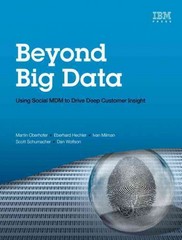Answered step by step
Verified Expert Solution
Question
1 Approved Answer
Test Report 2 Computer Application Software - Word Class Student ID Name Experimental purpose Master the basic operations of Word; Use Word software to write
Test Report
Computer Application Software Word
Class
Student ID
Name
Experimental purpose
Master the basic operations of Word;
Use Word software to write a Report of format;
Experimental content and requirement
Write a paper about computers using word software, which can include you understanding of computers, their uses, applications of computer networks, and so on
In WORD, it is required to have a title, illustrations, tables, artistic characters, and so on Imagine that this paper is going to be published in a newspaper or journal. In addition to practical content, there should also be a beautiful layout.
Add the formed document to the end of the experimental report.
Example:
to be stay inexplicable Recently, several types of action modelling wechniques ale devised that includes global and local features on the besis of of inform ation of depths and fea tures related to attions of the basis of human pore alterations The newly devised depth sensors open several capabilities for addressing this issue by offer ing D depth dat. This data not only provides strong human motion capuring model, but also made it liable of intrace lass Considering the triumphant tools of deep leaming to classification of image and detection of objects, the majority of resarchers has adapted deep model on characteristics to be automatically leant from video samples Even though, extensively utilized in several tools, precise complex research domain of eomputer vision. The majority of reeent survegs have concentrated on narrow issues that include recognition of human motions, Dskeleten data and stil image data. However, there exiss no particular survey is techniques for recognising the human actions One adapt generative models, like Conditional Random Field CRF an Hidden Markov model.
The recognition of human action is the most imperativ domain in the area of artificial intelligence. However, the huge prosess. Moreover, aecurate recognition of actions is complex precess because of changes in the variations of considered as a motivation for developing a new model for human action recogntion HAR The aim this research is to design a model for HAR with optimized Deep LSTM The
major contributions include:
TIWB PRbased Deep LSTM for HAR: The IIWBPRkased Doep ISTM is trained with IIWRPR in worlen to poodue, cptimum we ights for reoognizing the ac tions of humans. improved invasive wed eptimization IIWO and Poor rid eptimization PRO algor ithm.
Paper is orchestrated as: Section exemplifies rechniques employed for HAR. Section ilustrates proposed model to resognize the haman actions usinglWRRRbased Dosp prevides conclusion with IIWBPRbased Deep LSTM
LITERATURE REVIEW
Khen et al designed HAR wechnique by fusing handcrafled features with deep fea tures Khan et al developed fursing different features and deep ne ural network DNN Da et al utilined visual attention method to identify humu attions. boouedi et al designed a model to discover component analysis network PCANet for recognizing the human actions The method used FCANet for solving the issues of D image classification. Orean and Basturk the stacked autoencoders SAE Majd and Safabakhsh devised an expanded edition of LSTM units wherein the dat. related to motions were acyuired and spatial and wemponal leatures were mined. He el al devised a Denselyrecsgnizing human actions.
Feature Extraction
Fieure Human ac tion recognition modkl with IIWBPRbased Deep LSTM
Example:
The dataset considered for analysis is UCF videos dataset This dataset contains or iginal UCF videos. It is offered by Center for Research in Computer Vision, It fepresents an action recognition database that poses real action videos and has action categories. It contains video clips and are splitted into classes.
Esperimental outcomes
Figure exemplifies the experimental upshots of IIWBPRDeep LSTM using set of images
Performao metrics
Qualities of each approsch are calculated with specific measures and are elucidated below.
Accuracy
It def ined the degree of computed value to its real value in propesed IIWBPR Doep I STM using iteration te ane and Moreover for training data, the specificity observed by IIWBPRDeep LSTM using ineration to are and The score related analysis is exhibited in figure d For training data, the seore cbserved by proposed ITWBPRDeep LSTM using hteration to are and Moreover for training data, the Fscore observed by IIWBPRDeep LSTM using iteration to

Step by Step Solution
There are 3 Steps involved in it
Step: 1

Get Instant Access to Expert-Tailored Solutions
See step-by-step solutions with expert insights and AI powered tools for academic success
Step: 2

Step: 3

Ace Your Homework with AI
Get the answers you need in no time with our AI-driven, step-by-step assistance
Get Started


